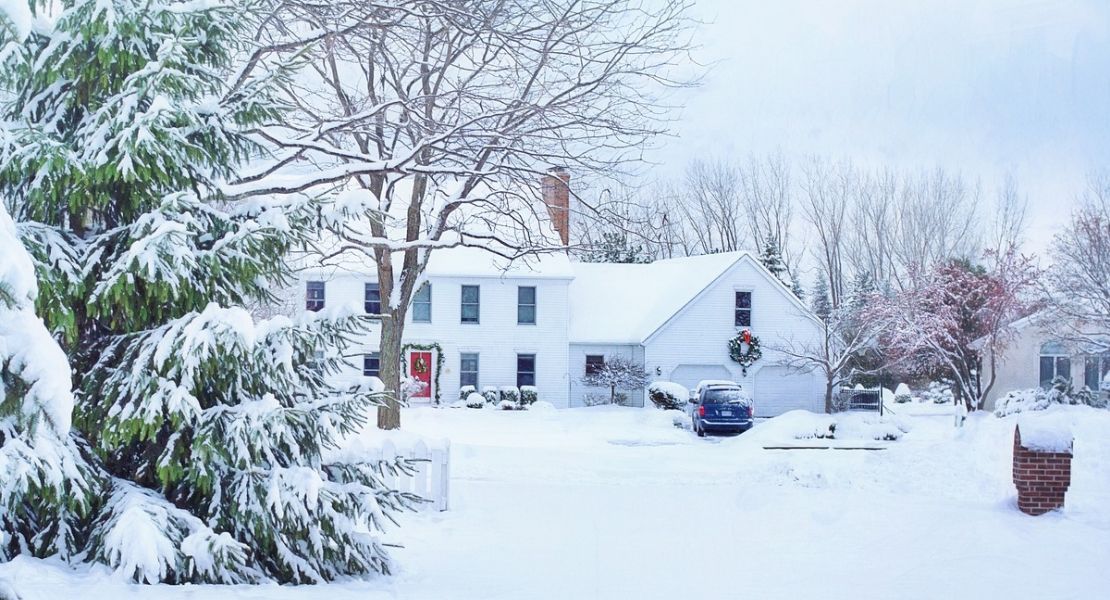With the clocks now on winter time, the cold season seems to be fast approaching us. But what should you do to prepare your house for winter and the colder months? Here are our six top tips for getting your home ready for the coming winter…
1. Seal Drafts
One of the most cost-effective ways to prepare your house for winter is to prevent warm air from escaping and cold air from entering. This means sealing up drafts. Common draft sources include windows, doors, and any gaps in the building envelope.
When looking at your windows, use weatherstripping or caulk to seal gaps. For an added layer of insulation, consider installing insulating film or heavy drapes. With doors, think about installing or replacing the weatherstripping. You can also use draft stoppers or door sweeps to prevent cold air from sneaking in under the door.
Finally, you should inspect your home’s exterior for any cracks or holes. If you find any, seal them with the appropriate caulk or foam sealant.
These tips will help to cut out many of the drafts in your home but you may also want to consider professional energy audit. This can be a great investment, as it can reveal less obvious draft sources and recommend specific solutions.
2. Insulate
Proper insulation is your home’s best defence against the freezing temperatures. A well-insulated home will also retain heat better, saving you costs on your heating bill and making your home more cosy through the colder months.
When looking at insulation, the first place to go in your home is the attic. Heat rises, and a lot of it can escape through an uninsulated attic. Make sure that you have a well-insulated attic and that the insulation doesn’t need replacing.
An often-overlooked element when trying to prepare your house for winter is to make sure that water pipes are insulated to prevent them from freezing. This may not seem like a high-priority
3. Prepare Your Heating
When cold really starts to hit, you’ll be putting your furnace to work, so you want to make sure it is ready for the job.
One of the first things you should do is to replace the filters. This is a simple task, with filters available at most hardware stores or Canadian Tire. The filters should be replaced regularly, especially during winter, as they improve the efficiency of your furnace and the quality of the air in your home.
If you haven’t already, you may want to look at installing a programmable “smart” thermostat which can help to ensure optimum use of your heating during those cold months, potentially saving you lots of money on your gas and hydro bills.
As an extra step, you may want to consider having your furnace inspected and serviced by a professional. They can ensure that it is running at maximum efficiency and offer solutions if it isn’t.
4. Prepare for Emergencies
Winter storms in Ontario can be severe and you need to keep this in mind when you prepare your house for winter. Even in bigger municipalities, these can sometimes lead to power outages and, depending on your location, there is the possibility of you being snowed in. It is, therefore, prudent to prepare for these potential problems in advance rather than being caught out when they happen.
Create an emergency kit for your home with items like flashlights, batteries, a first-aid kit, non-perishable food items, bottled water, and blankets. Store it somewhere safe and easy to reach, so it is available to you at any time.
Power cuts tend to be mostly short-lived in municipalities but can last longer in more remote locations. If you live in a more rural area, it might be worthwhile investing in a generator and learning how to use it.
And, of course, if you live anywhere in Canada, you should always ensure you have snow removal equipment on hand in your home. A quality snow bower can save you a lot of hard work after a big snowfall, but a good quality shovel is also a good tool to have.
5. Check Outdoors
If you have an outdoor faucet in your garden, ensure that you turn off the water before the cold kicks in. There should be a shut-off valve somewhere in your house and it is important to use it. If water continues to be fed to the faucet, the pipes will freeze in the cold weather and cause potentially expense damage.
After a snowfall, you should also check to make sure that exhaust vents are clear and haven’t been blocked by snowdrifts. These vents are important for removing potentially harmful gases from your home, so you don’t want to have their exits blocked.
6. Review Your Insurance
If you haven’t already, be sure to check your home insurance policy to see what is and isn’t covered when it comes to winter damage. As an extra layer of caution, you may also want to take pictures of your home before winter as a reference for any claims.
Finally, if you have made any additions, improvements or other renovations to your house, ensure that you update your insurance policy reflects these changes.
How to Prepare Your House for Winter
The cold and snow of winter can be a challenge, but with these six tips, your house will be a warm, welcoming haven no matter how low the temperature drops. Don’t wait for the first snowfall; start to prepare your house for winter today and enjoy the peace of mind that comes with a well-protected home.




